'They're dying because we're killing them': Documentary hopes to help save right whales
If a key weapon in the battle to save the North Atlantic right whale is public awareness, the filmmakers and subjects behind a new documentary are on the front lines.
The “Last of the Right Whales” movie will get an area premiere at 7 p.m. Thursday at Cape Cinema in Dennis, with local experts on hand for a Q&A. But that’s just one piece of a year-long online “impact campaign” and a multi-theater coastal tour organized by producers and whale advocates to get the public lobbying for needed policy and behavior changes.
The goal: Try to ensure the approximately 360 right whales left in the ocean have many more years, and more companions, for their spring-migration journeys along the East Coast of North America.
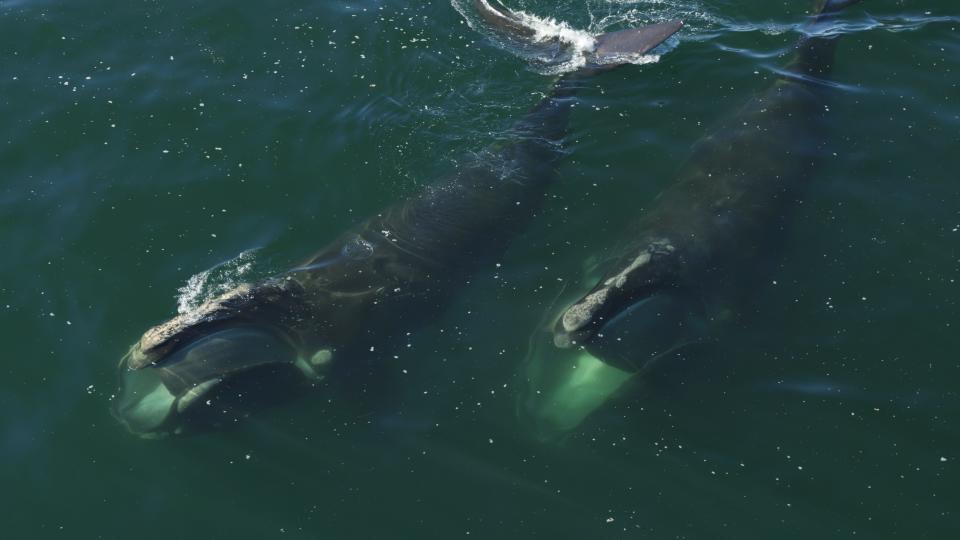
The message: The critically endangered whales “are dying faster than they can reproduce” and with “only 90 breeding females, they could be extinct in 20 years unless we act now.”
The 2021 movie depicts — including through rare ocean footage — the dangers that the giant marine mammals face from ship and boat strikes, entanglement in active and lost fishing gear, and from climate change pushing them into more treacherous territory to find food.
The movie follows the story of particular right whales, as well as what particular researchers, scientists and observers are doing to try to help them. Those stories in "Last of the Right Whales" cover facts and concerns that whale advocates, many of whom live or work on Cape Cod, have been trying to make people aware of for years.
Making change: Whales untangled? State contemplates opening closed areas to fishermen using ropeless gear
Yet research has shown that even many environmentally concerned people in New England and across the country have never heard of the North Atlantic right whale.
In a survey, 58% of people who saw the documentary after it was released to large audiences last month in Canadian theaters and special screenings said they previously had little or no knowledge of the whales. The good news: 79% afterwards said they felt they understood the challenges of the endangered species.
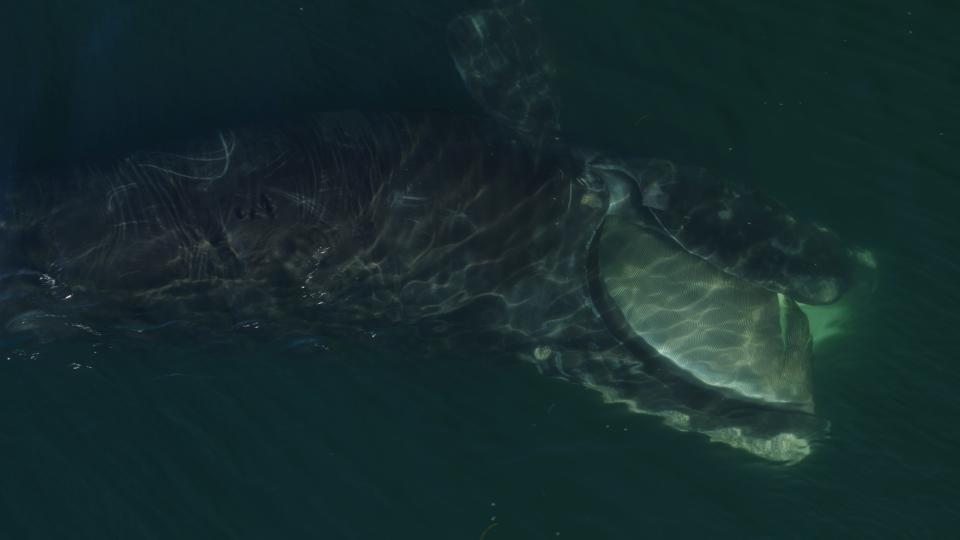
In an interview from Norway, director Nadine Pequeneza said she became a filmmaker in large part to effect social change.
“When I realized that we were responsible for unintentionally killing these animals, I felt like it was a story that needed to be spread to a wider audience,” said Pequeneza. “And film is really a very compelling way to make people take notice and care about something that they may have never been exposed to before.”
Plus, hopefully, take meaningful action.
“(We want to) make people love these whales and recognize that there are things that we can do, behaviors that we can change that will help protect the species and help them recover as they have recovered in the past,” she said.
A Cape Cod and international effort
While Pequeneza’s HitPlay Productions company is in Canada, the posse of organizations and scientists working on the film’s advocacy and awareness effort is international. That includes appearances in the documentary by representatives of the Center for Coastal Studies in Provincetown, the Woods Hole Oceanographic Institution (researcher Michael Moore is featured), and the Yarmouth Port-based International Fund for Animal Welfare (IFAW).
“The media really represent our mouthpiece to the world about the state of this (whale) population,” explained Charles “Stormy” Mayo of the 46-year-old Provincetown center’s involvement.
Mayo is its co-founder, a senior scientist, director of the Right Whale Ecology Program and chair of the Department of Ecology there. One of the center's scenes in the film shows a harrowing whale disentanglement effort, and Mayo will be part of Thursday’s Q&A at Cape Cinema.
“My view is that some of us do research in the field, but we need rapid media strikes, if you will, to bring that story to the public — whether it’s print or a documentary or news. That’s an important part of the battle,” he said in a phone interview. “When the populace knows about something through a documentary … the populace is likely to respond with some pressure that will have an impact on government.”
He's in the documentary too: WHOI scientist wrote a book on right whales’ possible extinction. Why you should know him.
Whale advocates have “an alarming concern about the low level of (public) awareness up to now,” said Patrick Ramage, IFAW’s senior director of outreach and program collaboration, who was part of a panel for a Charleston, S.C., screening Wednesday and will participate at Cape Cinema. “If we don't close that gap, then it's going to be difficult to see where the support for prompt action on issues related to shipping and fishing is going to come from."
“Film has a unique power to move us intellectually and emotionally," he said. "I think ‘Last of the Right Whales’ arrives just in the nick of time.”
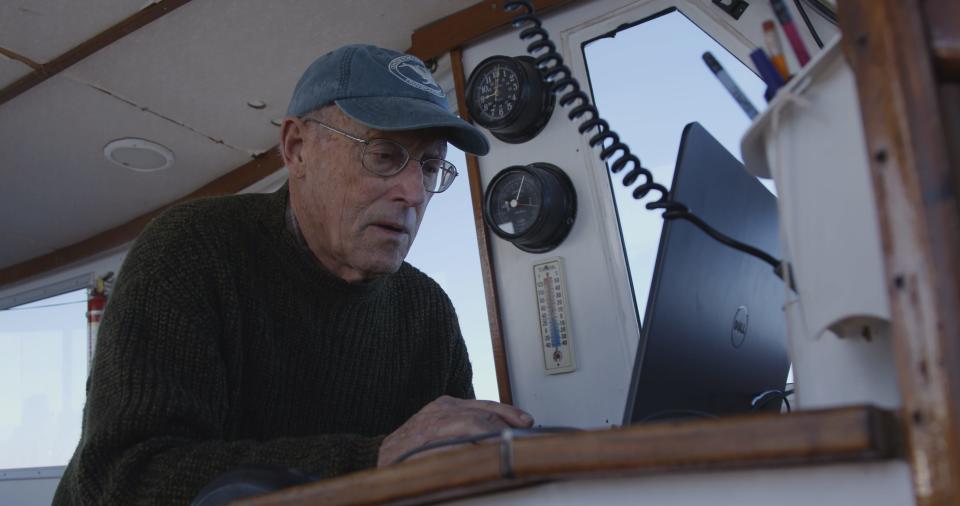
Why including Cape Cod was important
Cape Cod’s involvement with the film is strategic, because of the area’s unique relationship with the North Atlantic right whale and because of laws that prohibit filmmakers or anyone else getting too close to the endangered creatures. When the whales feed here — and they have been again in recent weeks, in large numbers off Provincetown — they are close to the surface so the Cape is one of the easiest places to spot and film them.
Center for Coastal Studies research shows “we have the highest density of whales seen anywhere,” said Mayo, calling that “an extraordinary situation.”
The center is also a leader in developing whale disentanglement technology and training people worldwide, Mayo noted, and state and federal agencies here manage the bay “at a level which is not seen throughout most of the range of marine mammals.”
That Cape Cod Bay is such a “hot area” for whales isn’t recognized by many local residents, much less people elsewhere in the country and world, experts say. That’s where film screenings and the “impact campaign” are aiming to make a difference, with plans also underway to show "Last of the Right Whales" in schools; on TV in Canada, France and Germany; and potentially on U.S. TV or streaming channels.
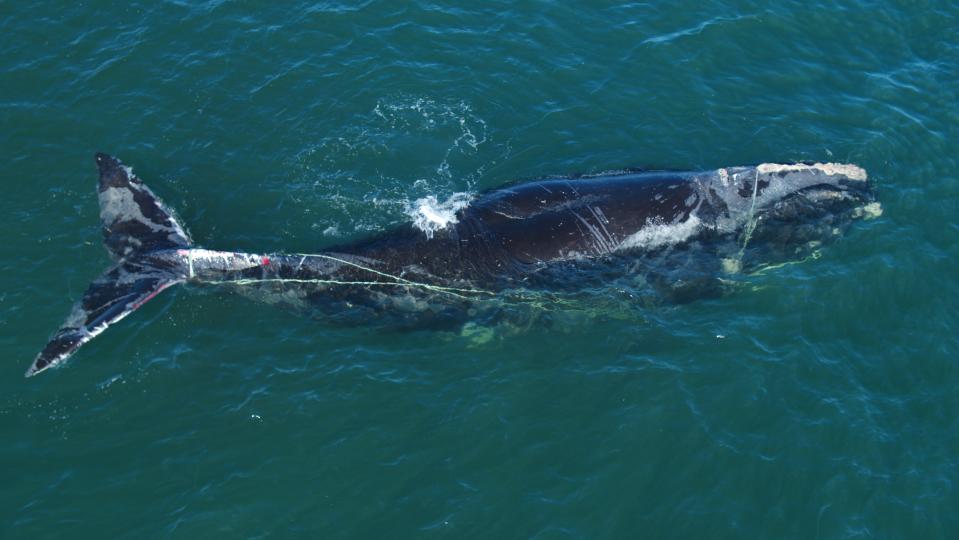
The story that needed telling
Before 2017, Pequeneza said, she was among those who had never heard of a right whale, much less its possible extinction. The multiple deaths in 2017, which scientists called an “unusual mortality event,” caught her attention.
While Mayo noted research continues because there is so much still unknown about the mysterious whales, grim statistics tell part of their story.
According to the National Oceanic and Atmospheric Administration, there have been “elevated mortalities” recently, with 34 dead stranded whales (21 in Canada, 13 in the United States) since 2017, including 17 (12 in Canada, 5 in the U.S.) in that year alone.
The leading cause of death, NOAA said: “human interaction,” specifically from gear entanglements or vessel strikes — with 85% of right whales entangled at least once.
The stories told in “Last of the Right Whales” relate both to the deaths and hopes for increasing whale birth numbers, both the problems and possible solutions.
Where are they?: Solving a mystery: How researchers found missing North Atlantic right whales
The movie includes disturbing scenes of whale NARW #4615 trying to free itself from ropes, as well as a Provincetown crew working to disentangle the whale known as Snowcone. Both Pequeneza and Mayo described whales trying to escape from gear as “torture.”
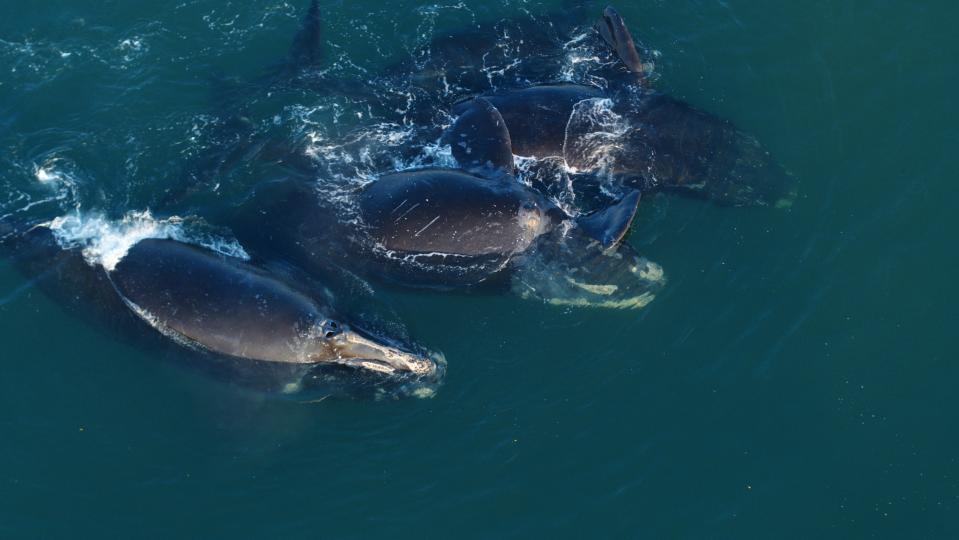
But the director said it was vital for the film to also discuss promising fishing technologies that protect whales and livelihoods — New Brunswick snow crab fisher Martin Noël is shown conducting landmark real-world testing — and Canadian and U.S. measures to reduce entanglements and vessel-strike threats.
“I didn’t want (viewers) to walk away in despair,” she said.
Sandwich-based lobsterman Rob Martin will represent the fishing side of the whale concerns on Thursday’s Cape Cinema panel with Mayo, Ramage and WCAI moderator Mindy Todd.
Getting people to care
Spotlighting particular researchers’ and people’s interaction with and tracking of the whales has also been key to getting movie-watchers engaged with the creatures and what might happen if steps aren’t taken, Pequeneza said.
Pandemic-related delays unexpectedly allowed her to follow the progress of Snowcone and her calf. What began as joyful sightings in unexpected Southern locations turned tragic with injury and entanglement.
“That mom/calf pair story is one of the most moving things and something people really connect with,” Pequeneza said. “In the 2 1/2 years we were filming, we were able to witness what's happening to this entire species here through the frame of one mom/calf pair.”
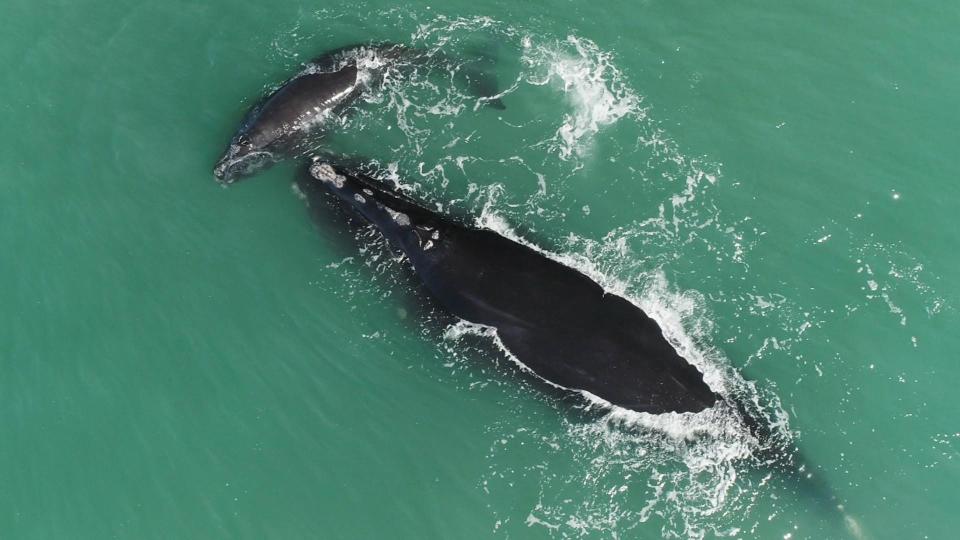
“There is footage in the film that is as gorgeous as any mother/calf footage I've ever seen … and I’ve seen a lot of it,” Ramage said. “There are also wrenching images of the implications of human activities on these whales. They’re dying because we’re killing them … and I think the film lays out, in a sense, a road map for confronting this crisis because … you meet compelling characters that are engaged in this effort in which we all have a role to play.”
The impact campaign
There are meaningful steps people can take.
This is the third documentary that Pequeneza has made linked with an “impact campaign” to effect change from the start. Other groups involved include the Canadian Wildlife Federation, Canadian Whale Institute, Sierra Club Canada Foundation, Oceans North, the Anderson Cabot Center for Ocean Life at the New England Aquarium in Boston, and regional organizations.
Possible help: Freeing right whales: Ropeless gear petition aims to protect marine life
Campaign goals involve awareness, but also getting people to lobby marine industries and governments to act to reduce vessel strikes and gear entanglement. There are links at https://lastoftherightwhales.com/take-action/campaign-usa/ to data, ideas and email messages that supporters can send to President Joe Biden and Canadian Prime Minister Justin Trudeau.
Viewers are also asked about supporting marine companies trying new technologies; retailers that ask carriers to obey voluntary slowdowns in areas whales might be; and cruise lines that voluntarily slow down in whale habitats.
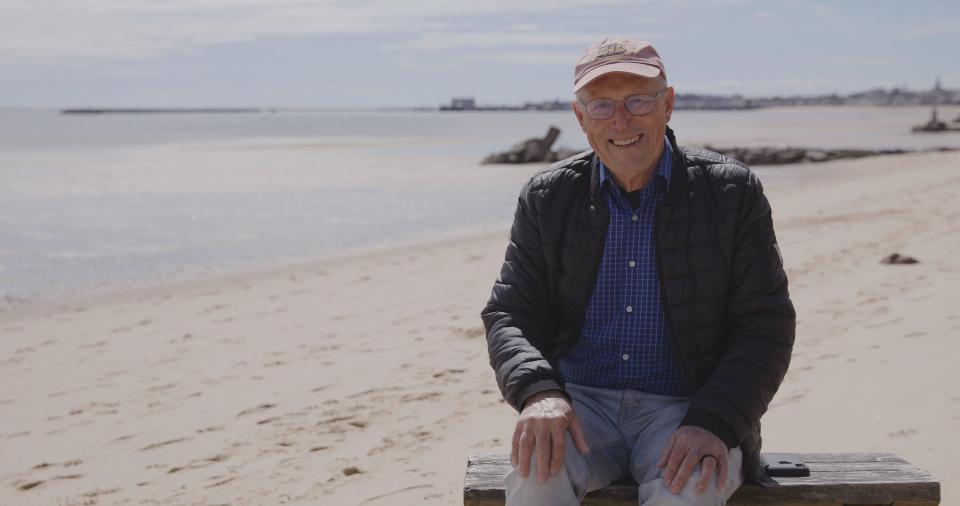
Ramage said he tells people about the free Whale Alert phone app that was originally a tool for mariners to spot whales to avoid but has also been used by observers to record the presence of whales.
Organizers wanted the activities to be “commensurate with the power of the documentary," he said, "and motivate folks right from the moment they saw the movie to become more aware and engaged in this urgent campaign to save the last of the North Atlantic right whales.”
Contact Kathi Scrizzi Driscoll at kdriscoll@capecodonline.com. Follow on Twitter: @KathiSDCCT.
This article originally appeared on Cape Cod Times: Saving endangered right whales with public help is aim of documentary

